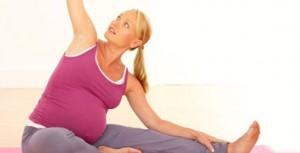
Stretch marks are very common within the general population, they don’t just affect women that are pregnant.
Stretch marks is there a cure for our stretched and scarred skin? Perform the many ‘miracle cure’ creams on the market assist with stretch marks? Unfortunately for the 70% of women that are pregnant on the receiving end of stretchmarks – there really is not a miracle cure, but you will find certainly ways to make them fade and be less noticeable on the skin.
Stretchmarks are actually scars that develop within the dermis, the deep layers of your skin. A stretch mark happens when the collagen fibres that provide our skin its elasticity are stretched too much, too quickly and break. Fast putting on weight commonly results in stretch marks so it comes as no surprise that a lot of pregnant women end up with stretch marks because of the rapid stretching of the skin, particularly round the belly, lower back, thighs and bum.
What can cause stretch marks?
Stretch marks are very common within the general population, they don’t just affect women that are pregnant. They can happen whenever your skin is stretched, for example when we’re growing during puberty, or when wearing or losing weight, but hormonal alterations in pregnancy can affect your skin thus making you more likely to get stretch marks.
The skin we have is made up of three main layers – the skin (outer) layer, the dermis (the center layer) and the subcutis (the inner layer). Stretchmarks happen in the middle layer, once the skin is stretched a great deal over a short time. This stretching can break the dermis in places, forming stretchmarks.
It’s thought that stretch marks affect as much as around 80% of pregnant women. Whether you get stretch marks depends on your skin, as some people’s skin is much more elastic. After your baby comes into the world, the marks should gradually fade and be less noticeable, but they won’t disappear completely.
Benefits of Stretching
Stretching through the course of a healthy pregnancy – together with your health-care provider’s approval – can help you maintain proper alignment as the body changes and your center of gravity shifts. Maintaining or upping your flexibility offsets the common aches and pains of being pregnant, including lower back pain and shoulder tension. Reducing or eliminating tightness inside your muscles can also contribute to a decrease in psychological stress, making you feel more enjoyable in general. Continuing to stretch after delivery can help you better cope with postpartum changes, for example tighter chest muscles and internally rotated shoulders due to heavier breasts and a long time spent holding
Pregnancy putting on weight
You are more likely to get stretchmarks if your weight gain is more than average during pregnancy. Most women gain between 10kg and 12.5kg (22 to 28lb) during pregnancy, although weight gain varies a good deal from woman to woman. Just how much weight you gain depends on unwanted weight before you were pregnant. It’s essential that you don’t diet to lose weight when you’re pregnant, however, you should eat a healthy, balanced diet.
If you’re worried about your weight, talk to your midwife or GP. They might give you advice if you weigh a lot more than 100kg (about 15.5 stone) or under 50kg (about eight stone).
Stretchmarks are not harmful. They don’t cause medical conditions, and there’s usually no need to call at your GP because there isn’t a specific strategy to them. Over time, your skin will shrink and also the stretch marks will fade into white-coloured scars.

Stretch in early Stages of Pregnancy
Recommended Stretches
To stretch your back in any trimester, perform the cat-cow stretch to deal with and knees, alternating between rounding and arching your lumbar spine. Child’s pose, a vintage yoga exercise, offers a way to stretch your whole back. To accommodate your belly, perform child’s pose together with your knees open, rather than together, or put your hands on top of a stability ball. Pelvic tilts are pregnancy exercises which target your lower back. Stand against a wall having a neutral spine. Tilt your pelvis forward and upward to press your back into the wall. Shoulder circles, both forward and back, will help you open your chest.
Target Muscles
In the first trimester onward, your stretching routine should concentrate on a few key groups of muscles, particularly if you’re short on time and can’t properly stretch every muscle in a single session. Key muscle groups to stretch while pregnant include your lower back, chest, neck, shoulders, shoulder rotators, quadriceps, hamstrings, calves and hip flexors. If your muscle or group of muscles is overly tight, it may create a functional imbalance in which the opposing muscles are overly stretched, or weak. For instance, as your belly stretches to support your growing womb, your back muscles tend to become tight and fewer flexible because they must make amends for weak abdominal muscles to maintain posture.
Precautions
While pregnant, your body produces a hormone called relaxin, which boosts the pliability and flexibility of your ligaments and cartilage — allowing your belly to develop and aiding in the process of childbirth. The existence of relaxin also increases the risk you could more easily overstretch your muscles. To avoid overdoing it, make certain your stretches are comfortable, not painful. Relax throughout each exercise. Hold stretches not less than 30 seconds. Ease into each one of these, performing them with control from beginning to end. Avoid bouncing, and don’t stretch your joints or ligaments. Instead, stretch the widest a part of each muscle.
